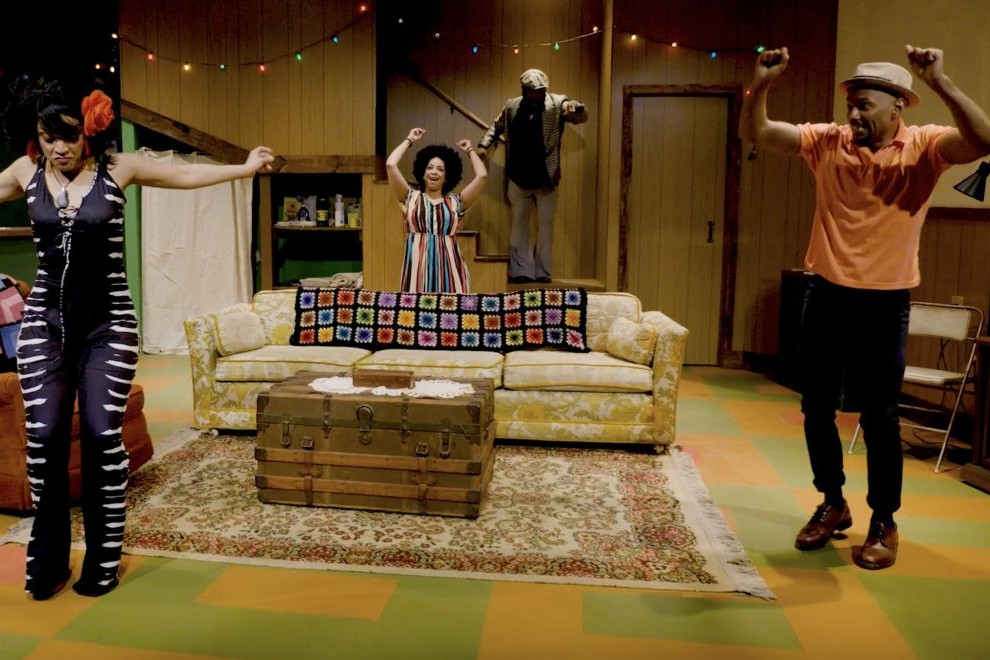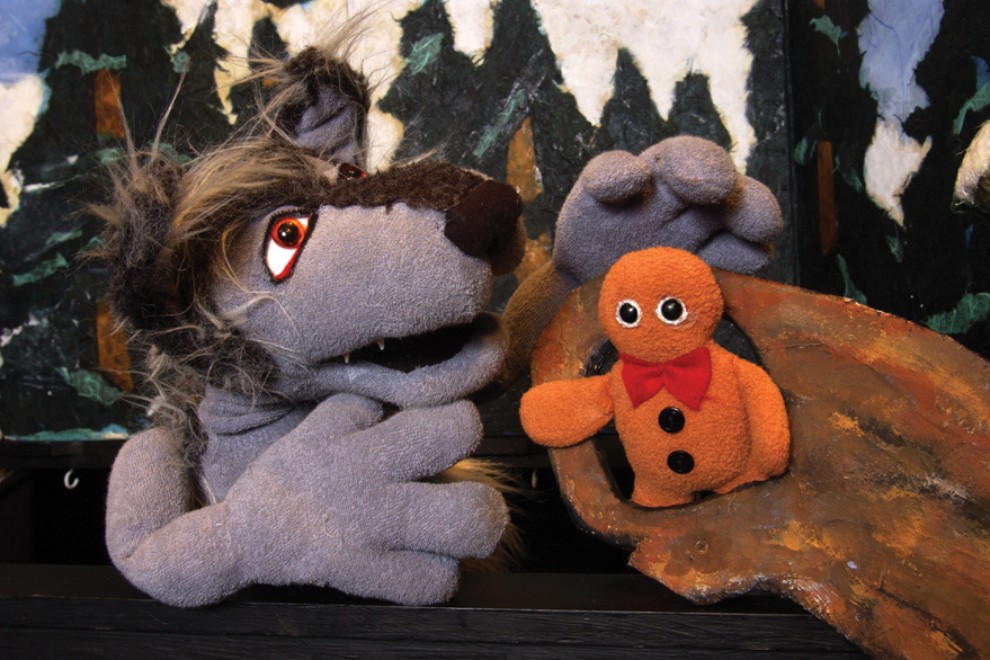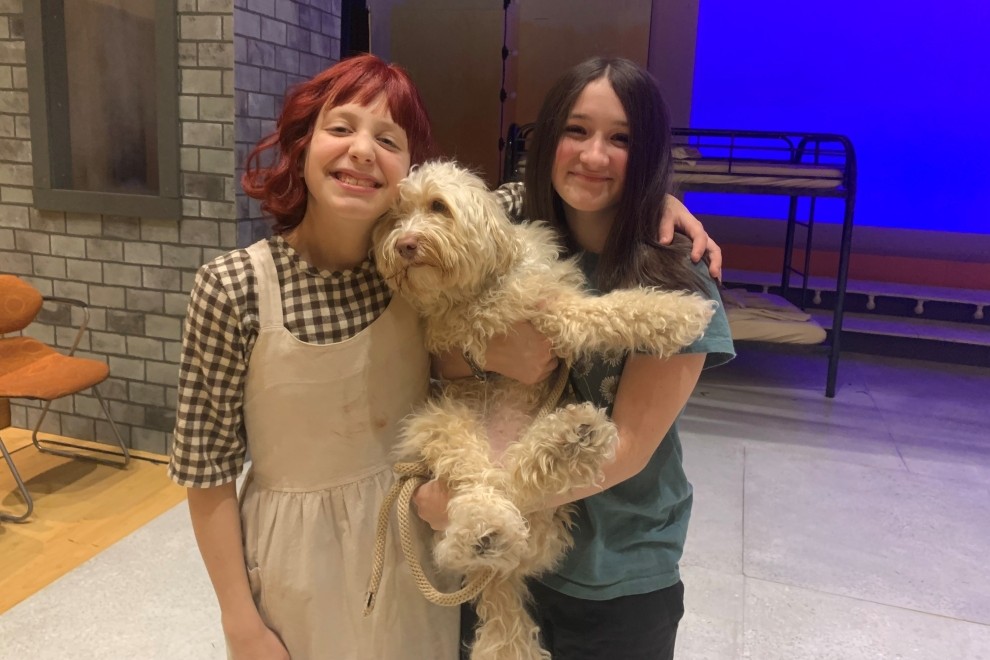In 1967, a police raid in an after-hours bar in Detroit ignited residents’ simmering frustrations about systemic racism and police violence into a riot that lasted five days and resulted in damage to businesses and homes, thousands of arrests, and 43 deaths. In 2014, Dominique Morisseau wrote a play about it. Detroit ’67, the first in Morisseau’s cycle of plays titled The Detroit Project, depicts the events of the long, hot summer through the story of a sister and brother, their home, and their dreams for the future. The play weaves in a comprehensive set of relevant social forces — racist policing, barriers to economic mobility for Black residents, the Vietnam War, the proliferation of unlicensed bars and clubs — but it doesn’t feel like a history lecture. It is an emotional, personal, compelling work of theater, and it’s beautifully brought to life under the direction of Dr. Tawnya Pettiford-Wates at Firehouse Theatre this spring.
The play takes place in the basement of a house passed down to siblings Chelle and Lank by their parents. The two operate an unlicensed after-hours bar out of the home to support themselves and Chelle’s son, who is away at college. They hold different attitudes about navigating life in Detroit. Chelle is cautious and determined to maintain the life their parents were able to create. She fears the precarity of their situation as a Black family in Detroit and the risks they cannot control. Lank is charismatic, ambitious, and motivated. He’s frustrated by the discriminatory barriers that limit his ability to pursue other goals in business and life. The siblings clash — often in a very funny, distinctly sibling-like way — and the play respects both outlooks. Lank is impulsive but kind, and many of his bold choices enhance the lives of the people around him. Chelle is a pragmatist, never a villain. Her affection for her family and friends is palpable. She’s the heart of the play; she’s the one who wears house slippers while everyone else wears shoes.
Firehouse Theatre’s Powerful Cast
Katrinah Carol Lewis is phenomenal in the role of Chelle. Her complete and well-rounded performance allows us to see many sides of the character. Lewis has an impressive ability to convey the layered emotions of affection, fear, and anger that Chelle attempts to tightly control. She’s fun, but she rarely lets loose. Lewis’s interpretation explores the intersecting challenges and obligations that Black women uniquely experience. The result is a beautiful portrait of a character’s resilience against the backdrop of violent social unrest.

Each cast member brings the story to life in important ways. David Lyve Watkins makes Lank fun and driven, and his charisma propels the play’s action. Nicole Cowans and Jeremy V. Morris portray the siblings’ closest friends, Bunny and Sly, with humor accompanied by convincing moments of depth. Marie Lucas is simultaneously urgent and cautious as Caroline, a stranger who stumbles into their lives with a set of interests that don’t always neatly align with the household’s. Under Dr. T’s direction, this cast squeezes every feeling out of the script. They are funny and committed physical performers, punctuating each joke with full body movement. Everybody longs for something; you feel their motivations. The acting is expressive, creating lots of movement and energy in a static space.
Detroit ’67’s Sound, Lighting, and Set Design Shine
Because the entire show takes place inside the siblings’ house, the production gets creative about sharing information from the outside world. The sound design, led by Kyle Epps, provides perfect cues about the unrest happening outside and the familiar, yet disconcerting, sounds of normalcy after the riot ends. I really enjoyed Michael Crevoisier’s lighting design, which was unobtrusive and very effective. It conveyed both the passage of time and the role the basement served for the characters in any given scene. One excellent aspect of Mercedes Schaum’s scenic design is the visibility of the stairs leading down to the basement, which opens up the experience to many dramatic opportunities for the audience to anticipate interaction or see reactions that the characters cannot. The set itself felt lived in. This was achieved through unmoving decorations like childhood illustrations and music posters, but also through interactive elements like party decorations and lights — and the comfortable and familiar ways the cast of characters lounged on the couch, slung themselves across the barstools, and made use of the items around them.
Finally, I can’t adequately describe this show without mentioning Motown. Motown is pervasive in Detroit ’67. The characters talk about their favorite Motown artists, eagerly anticipate purchasing new records, and use Motown songs to communicate with each other. The throughline of Motown in this production works on a lot of levels. It situates the characters in a specific place and time. It immediately connects them to the audience, because while Motown is ’60s Detroit, it’s also everywhere, always. The songs are so good and so beloved, and absentmindedly singing along to the Supremes or attempting to replicate The Temptations’ synchronized moves are experiences a contemporary audience can still relate to. Motown is also a case study in crafting intentional, careful public images and navigating difficult terrain as a Black-led business. Its central role in this play adds a lot of thematic depth to the work overall.
This excellent production is well worth your time. Detroit ’67 runs through March 30 on the Carol Piersol Stage at the Firehouse Theatre. The play is in two acts with an intermission. The play includes strong language and offstage depictions of violence and is recommended for teenagers and adults. You can find more information and tickets here.





